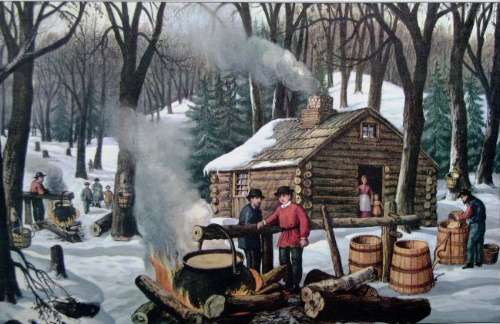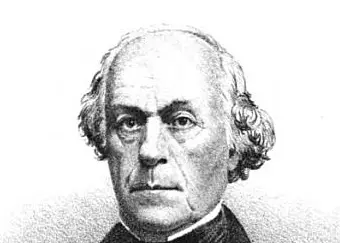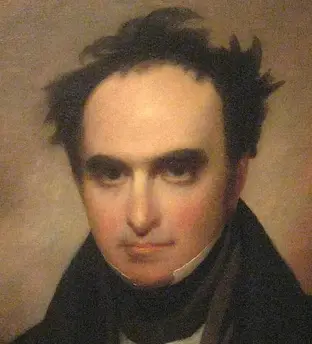The year 1816 was known as ‘The Year Without a Summer’ in New England because six inches of snow fell in June and every month of the year had a hard frost.
Temperatures dropped to as low as 40 degrees in July and August as far south as Connecticut. People also called it ‘Eighteen Hundred and Froze to Death’ and the ‘Poverty Year.’
The Year Without A Summer had a far-reaching impact. Crop failures caused hoarding and big price increases for agricultural commodities. People went hungry. Farmers gave up trying to make a living in New England and started heading west. Politicians who ignored the melancholy plight of their constituents found themselves out of office.
And to this day, scientists don’t agree on what caused the bizarre weather in The Year Without a Summer.
Year Without a Summer
There were warm days in the spring of 1816, but they were followed by cold snaps. In Salem, Mass., for example, it was 74 degrees on April 24. Within 30 hours the temperature dropped to 21 degrees.
Thomas Robbins, the East Windsor, Conn., bibliophile, noticed the late spring. He wrote in his diary, ‘the vegetation does not seem to advance at all.’
On May 12, strong winds and freezing temperatures from Canada killed the buds on fruit trees. Inch-thick ice formed on ponds and streams from Maine to Upstate New York. By the end of May, corn plants froze in central Maine.
Then on June 6, 1816, six inches of snow fell on New England. Clockmaker Chauncey Jerome wrote in his autobiography that he walked to work that day in Plymouth, Conn., wearing heavy woolen clothes, an overcoat and mittens.
Flurries fell in Boston the next day, the latest ever recorded. The snow was 18 inches deep in Cabot, Vt., on June 8. On June 11, a temperature of 30.5 degrees was recorded in Williamstown, Mass. Frozen birds dropped dead in the fields. Some Vermont farmers who had already shorn their sheep tried to tie their fleeces back on, but many froze to death anyway.
Benjamin Harwood, a Bennington, Vt., farmer, wrote in his diary that it rained all night then began to snow from 8 a.m. to 2 p.m.
The heads of all the mountains on every side were crowned with snow. The most gloomy and extraordinary weather ever seen.
And then it got warm again.
More Cold
Temperatures seesawed up and down throughout the Year Without a Summer, bringing hope on warm days that the crops could be harvested after all. Then sharp cold spells brought despair.
On June 22, for example, temperatures reached 101 degrees in Salem, Mass. But July 4 was cool. Chauncey Jerome wrote it was hard to feel patriotic while watching men play quoits in overcoats. Then a northwest wind brought a three-day cold spell, with 30-degree temperatures in northern New England, 40 degrees in Hartford and New Haven.
The frost destroyed the bean crop in Franconia, N.H., and bean, cucumber and squash crops in Kennebunkport, Maine. Young plants grew so slowly they were vulnerable to frost, and farmers harvested so little hay they had to slaughter their livestock or feed them oats and corn.
As depressing as the second severe cold spell was the drought that enveloped most of the United States, including New England. “I never saw our street so dry,” complained a minister in East Windsor, Conn.
Gov. William Jones of Rhode Island issued a proclamation designating a day of public ‘Prayer, Praise and Thanksgiving,’ noting the ‘coldness and dryness of the seasons’ and the ‘alarming sickness.’ New Hampshire Gov. William Plumer believed the weather was God’s judgment in the earth and urged people to humble themselves for their transgressions.
Fear of famine began to grow during the Year Without a Summer.
Hard Frost in August
Early August was sunny and warm. Farmers planted new crops hoping the growing season might last beyond the first frost in October. On Aug. 13th and 14th, a cold spell froze the corn crop north of Concord, N.H.
On Aug. 20, a short, violent storm struck Amherst, N.H., signaling a steep drop in temperature: 30 degrees within a few hours. It snowed in Vermont. In Maine, farmers wrapped rags around their plants to protect them.
At least the wheat, rye and potatoes were holding up, staving off famine. In Ashland, N.H., Reuben Whitten was able to grow wheat on his south-facing farm. He shared it with his neighbors. After he died in 1847, his neighbors paid for his gravestone and later erected a monument that read:
A pioneer of this town. Cold season of 1816 raised 40 bushils of wheat on this land whitch kept his family and neighbours from starveation.
Hopes of salvaging what remained of the corn crop were dashed by a severe frost on Aug. 28. Maine and New Hampshire farmers cut up whole fields of corn for fodder.
Rev. William Fogg of Kittery, Maine, summed up the Year Without a Summer: ‘Crops cut short and a heavy load of taxes.’
There were reports of people eating raccoons, mackerel and pigeons.
It warmed up again in September, as usual, but then at sunrise on Sept. 26 in Hanover, N.H., it was 26 degrees. Snow fell throughout the region, and a killing frost froze crops in the field and apples on the branch.
Nettles and Hedgehogs
The drought caused wildfires to break out in the woods throughout New England. Fires in western New York produced so much smoke that sailors were blinded on Lake Champlain.
The Year Without a Summer was especially hard on the poor. The New Hampshire Patriot reported on Oct. 22, 1816, that ‘Indian corn, on which a large proportion of the poor depend is cut off. ‘ Vermont farmers lost much of their livestock, and Vermonters foraged for food such as nettles, wild turnips and hedgehogs.
Three-quarters of the corn crop was lost during the Year Without a Summer. Prices soared for wheat, grains, meat, vegetables, butter, milk and flour. In Maine, the price of oats tripled and potatoes doubled. Hay was 180 a ton in parts of New Hampshire, six times its usual cost.
The Year Without a Summer brought widespread famines in Europe as well. The bad weather forced a group of poets to remain in their rooms in Switzerland. To avoid boredom and entertain the group, Mary Shelley wrote Frankenstein.

Making maple syrup
At least the Year Without a Summer had been good for producing maple syrup. Vermonters traded syrup for fish, which is why they called 1816 the Mackerel Year.
Members of Congress seemed insensitive to the suffering of the people and voted to double their own salary. It didn’t go over well. Nearly 70 percent of incumbent U.S. representatives were voted out of office – including Daniel Webster.
After the Year Without a Summer, Josiah Meigs, commissioner general of the Land Offices, in 1817 began a more systematic approach to observing weather phenomenon. He ordered the 20 Land Offices to take thrice-daily recordings of the temperature, winds and precipitation.
The Frigid Zone
Author Samuel Goodrich visited New Hampshire, observing:
At last a kind of despair seized upon the people. In the pressure of adversity, many persons lost their judgment, and thousands feared or felt that New England was destined, henceforth, to become part of the frigid zone.

Samuel Goodrich
The next year started out cold as well, convincing Northeast farmers to migrate to the Midwest.
Rev. Samuel Robbins in East Windsor, Conn., wrote, ‘We have had a great deal of moving this spring. Our number rather diminished.’
At the time, many reasons were given for the weird phenomena: sunspots, deforestation, great fields of ice floating in the Atlantic, Benjamin Franklin’s lightning rod experiments and, of course, the wrath of God.
Many people believe the Year Without a Summer was caused by a massive volcanic explosion on Mt. Tambora in Indonesia, killing 15,000 instantly. Soon after, another 65,000 perished of disease and starvation. The volcanic ash and debris thrown up into the stratosphere is thought to have blocked the sun and caused a gradual lowering of temperatures.
Lee Foster, NOAA meteorologist, notes that climate data shows 1816 was part of a mini ice age lasting from 1400 to around 1860. The era had unusually harsh winters, short growing seasons and dry weather.
With thanks to The Year Without Summer: 1816 and the Volcano That Darkened the World and Changed History, by William K. Klingaman and Nicholas P. Klingaman. This story was updated in 2023.




69 comments
Climate change my arse hahaha
I’ll believe an educated scientist before I’ll believe a lawyer-politician who knows nothing but cheating the public.
Climate has been changing ever since the world began. Since cars didn’t exist, I suppose this one was caused by excessive equine and bovine flatulence.
The article states “And to this day, scientists don’t agree on what caused the bizarre weather in The Year Without a Summer,” but this is wrong. Scientists generally agree now that the primary cause was the gigantic eruption in 1815 of Mount Tambora, in Indonesia.
What is bizarre is some people can look at this event where (natural) climate change caused massive numbers of deaths round the whole globe from starvation and their taking from this is that we can safely ignore possible man made global climate change.
It’s like observing frostbite and therefore concluding that it is impossible that someone might be scalded…
That is exactly what I thought it would have been!
i will give u a 100 dollar bill if u can prove to me cows fart.
What unbelievable weather to survive –
What unbelievable weather to survive –
We know 1816, as we lost a great many in my family that year at Tolland, Connecticut.
It made butler pa known as the buckwheat county which saved many lives due to farmers in the area quick thinking during the time period. Also who is ready for ditto happening anytime with this year 2018 onward with the way volcanos are going off currently >•<
We know 1816, as we lost a great many in my family that year at Tolland, Connecticut.
Awesome info !!!
Actually… The thought it that there was a volcano somewhere and dark summer was caused by the ash cloud floated our way.
Mount Tambora, in Indonesia, erupted in 1815.
During the Little Ice Age, the bays here in Maine froze every winter. That year, though, it froze out to Monhegan, 20 miles out. Lou MacAnally, for his Doctoral Dissertation.
Must’ve been all those carbon emissions that humans produce that cause climate change……
That’s so crazy. I had no idea that could even happen in summer.
Great article, thanks for posting!
I’ve read about the year without summer. Very interesting, I hope it doesn’t ever happen again.
Great info. We think we have it hard. Wonder how or why people stayed in these places….and here we are today. Still in the same places.
Great info. We think we have it hard. Wonder how or why people stayed in these places….and here we are today. Still in the same places.
Yes, always read that the eruption of Mt Tambora was a major cause of this.
Yes, always read that the eruption of Mt Tambora was a major cause of this.
Yes, always read that the eruption of Mt Tambora was a major cause of this.
[…] printer's mistake included a prediction of winter weather for July. The year 1816 was known as the Year Without a Summer, with heavy snowfall in June and a hard frost during every month of the […]
I find it interesting that even in these early days of politics that the Congress were already acting like criminals and in the hardships of where so many lost so much they voted to double their salary. They didn’t care about the people then and still don’t care about the people today.
Exactly true, Jill. Congress on up, will always get their money just for lying, cheating, and manipulating the people as always. We have to rebuild Congress and get these careless farts out of there! Don’t even need them far as i am concerned. We never should have even had Government i say!!! Rotten criminals and thieves always making sure they have their glass houses in tact!!! Smdh! Get rid of Government!
[…] indifference to starving, dying New Englanders, whose “Year Without A Summer” in 1816 (and subsequent bad years) practically led to the exodus now known as the State of […]
Great post. Really interesting stuff. Thanks for taking the time to write it
[…] The volcanic winter that followed Mount Tambora’s historic eruption devastated communities around the world. Ironically, the volcanic winter effect was most heavily felt during the summer months, especially in eastern North America. Residents reported heavy snow falling as late as the middle of June in the northeastern United States, with one report indicating as much as half a foot of snow on June 6, 1816. […]
[…] fact, temperatures in the Northeast seesawed during the summer, the New England Historical Society […]
There are no hedgehogs in the Americas.
I would suppose they were actually referring to ground hogs or wood chucks.
Yeah ,but there are porkcupines , back then it was easliy misconception.
[…] the time having to wear an overcoat and mittens for much of the summer; another bookkeeper noted in his diary that “the vegetation does not seem to advance at all.” Frosts set in and […]
[…] the time having to wear an overcoat and mittens for much of the summer; another bookkeeper noted in his diary that “the vegetation does not seem to advance at all.” Frosts set in and […]
Wait wait wait..my Hedgehogs.. what are they talking about.. they never lived in New England
You’re correct about there not being any hedgehogs native to New England (or North America, I think, but haven’t researched that). I suspect they meant groundhogs (woodchucks).
I remember reading a novel about this when I was about 12 or so. I think it’s time to read it again. Patterns on the Wall (referring to stenciling done by itinerant artists) by Elizabeth Yates. She wrote a number of excellent historical novels about rural New Hampshire and New England life.
She was a great author…and wrote many wonderful books!
Wow! This is fascinating to me. It must have been brutal. Even with modern conveniences it would be difficult, can you imagine these poor people back then? I think with any living entity there is change. Humans, Animals, Plants and the Earth. And Mother Nature does right itself but we always want to fix it. Help it maybe but Mother Nature knows best how to move forward. Of course that is only my opinion.
[…] had begun to move a lot in 19th century New England. Yankees went west, looking for better land and warmer climate, or they went to work for the mills in the cities. Newcomers from Europe arrived seeking work. It […]
[…] People thought the summer of 1816 was the end of the world. They called it “the Year Without Summer,” “the Poverty Year,” and, memorably, “Eighteen Hundred and Froze to Death.” […]
[…] as our weather becomes more unpredictable. Some of these varieties were the only to survive the Year Without a Summer in 1816. That kind of resilience is so valuable. (Dr. Wiseman will lead a workshop in Portsmouth […]
[…] in the summer months. Several areas of U.S. and Canada experienced heavy snowfall with reports of half a foot of snow on June 6 in New England. Bitter frost caused major crop failures and caused prices of corn, wheat and other grains to rise […]
[…] a people that depend upon a system. 90% of the world would be dead if this was to happen today At least the wheat, rye and potatoes were holding up, staving off famine. In Ashland, N.H., Reuben Whitten was able to […]
[…] Chicken Man called “40 Bushels,” I was flabbergasted to hear the tale about the “Year Without a Summer” in 1816. Mr. Hubert will tell the story in the interview below, but, lets just […]
One thin twenty foot mirror placed far enough away sun wards, could cut sunlight enough to lower global warming. Off and on, turned sideways or various angles to allow more sunshine through. Could be done cheap……$40,000,000 or less.
All of history is, slight precession of Earth’s rotational axis, which causes its orientation to the then polar star changes over time. Things as slight as sunspot activity can influence weather. More or less sunlight happens….also our distance to and from the sun varies over the eons. Civilizations have always risen and fallen with the weather. Rome had some 5-600 years of good weather in it’s 800 years. Global Warming started in 1850….exactly. 1848 German Revolution happened because bad weather made half the folk unemployed and starving. We ended up with any that could afford to emigrate after the revolution was put down with bayonet and blood, to our good luck.
We now use 1″ by 3″‘s and air hammer short nails to build houses that blow away, instead 2″ by 4″‘s of 50-70 or more years ago and big long hand hammered nails. 50 and more years ago, I lived through a couple 125 + mph, Miami hurricanes with very little damage in the houses were once built more solidly. That is never talked about….build cheap and they blow away.
There were many heavy hurricanes that are ignored because it’s convenient to forget the 1930’s. Or the 1870’s. There is no money to be made if history if fully taught.
We should worry more about farmers excess nitrogen and pesticides ruining our water….which has been bought up by Nestle. But there is more money to be made in weather than in clean water….right now. Wait 15 years.
[…] experienced what became known as “The Year Without A Summer.” According to the New England Historical Society it was also known as “Eighteen Hundred and Froze to Death” and the “Poverty […]
[…] On June 8, 1816, it was reported that 18 inches of snow fell on Cabot, VT. Also — frozen birds dropped dead in field and sheep froze. Yet on June 22 it was 101 degrees in Salem, Mass. Can you imagine?! (Read more here.) […]
Unbelievable ‘
Widespread famines in Europe as well. Too, the inclement weather forced a group of poets to remain in their rooms in Switzerland, and, to avoid boredome and entertain the group, Mary Shelley wrote. “Frankenstein.”
[…] 4th☜ celebration DUH! U.S. Representative Daniel Webster got himself voted out of the office☜ Farmers tried to put the wool back on their sheep☜ ?!! More☜ KorbenDallas☜ arguing […]
[…] 1816, Henry came down with typhus, an epidemic that swept New England during the Year Without A Summer. As he lay on his deathbed, friends and followers came to visit. He insisted that a Hawaiian be […]
[…] New England Historical Society: 1816, the year without a summer […]
[…] 1816, known as the Year Without a Summer, six inches of snow fell in June and every month of the year had a hard […]
[…] Of course, the Internet is deadly for bookish magpies. Even finding an image for “The Year without a Summer” led to yet more links. Like this article from the New England Historical Society. […]
[…] But, unlike the other hurricanes, the Great September Gale of 1815 ushered in a second devastating weather event: the 1816 Year Without a Summer. […]
[…] average global temperatures dropped by almost 2 degrees Fahrenheit (3.6 degrees Fahrenheit). The following summer saw widespread famine and crop […]
[…] average global temperatures dropped by almost 2 degrees Fahrenheit (3.6 degrees Fahrenheit). The following summer saw widespread famine and crop […]
[…] average global temperatures dropped by almost 2 degrees Fahrenheit (3.6 degrees Fahrenheit). The following summer saw widespread famine and crop […]
[…] average global temperatures dropped by almost 2 degrees Fahrenheit (3.6 degrees Fahrenheit). The following summer saw widespread famine and crop […]
[…] average global temperatures dropped by almost 2 degrees Fahrenheit (3.6 degrees Fahrenheit). The following summer saw widespread famine and crop […]
[…] average global temperatures dropped by almost 2 degrees Fahrenheit (3.6 degrees Fahrenheit). The following summer saw widespread famine and crop […]
[…] average global temperatures dropped by almost 2 degrees Fahrenheit (3.6 degrees Fahrenheit). The following summer saw widespread famine and crop […]
[…] et probables, comme le montre par exemple l’année 1816, mieux connue sous le nom de « The Year Without a Summer« . En Nouvel-Angleterre, pas très loin de chez nous, six pouces de neige sont tombés en […]
[…] average global temperatures dropped by almost 2 degrees Fahrenheit (3.6 degrees Fahrenheit). The following summer saw widespread famine and crop […]
[…] Source: 1816: The Year Without a Summer – New England Historical Society […]
Comments are closed.